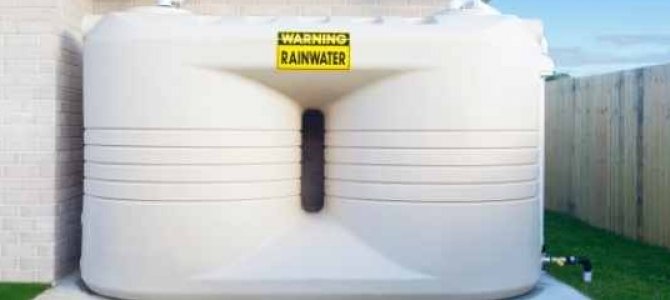 Shopping Cart
Shopping Cart
17 July 2025
How Can I Make My Water Tank Look Great?

A Practical 2025 Guide for the US, Australia & New Zealand
Thinking about installing a water tank at home, or worried the one you already have will stick out like a sore thumb? Whether you’re in the sweltering heat of a US summer or bracing for wet, chilly weather in Australia or New Zealand, this updated guide covers all the clever ways to screen, hide, and style your water tank so it complements your property beautifully in 2025. Plus, we’ll show you how to keep tabs on your tank’s water level effortlessly with Smart Water technology.
Why Install a Water Tank?
Is having a rainwater tank still worth it in 2025?
Absolutely. Changing rainfall patterns and recent droughts across the US, Australia, and New Zealand mean having your own water supply makes homes more resilient and eco-friendly. Many regions, like parts of New Zealand, have even made tanks mandatory for new builds. Modern tanks are cleaner, safer, and more discreet than ever, but that doesn’t mean you want yours to be the star of your front yard!
Where’s the Best Place to Put a Water Tank?
What location makes my tank less visible and more effective?
The best spot for your tank is somewhere discreet, ideally close to downpipes for efficient rain capture but out of main sightlines.
- Side of the house: Slimline tanks fit nicely along house walls or fence lines, making use of those less-trafficked paths.
- Garden boundary: Place tanks along fences in your backyard, disguised with screens or greenery.
- Blind side: Use spaces rarely visited for natural camouflage.
- Above vs. underground: Above-ground tanks are easier to inspect and maintain, while underground tanks vanish entirely if you have the budget.
Seasonal tip: In the summer, check for shade to protect stored water from heat. In winter, make sure access isn’t hindered by wet ground or plants.
Which Type of Water Tank Is Best for My Home?
What are the common tank types for homes in the US, Australia & NZ?
- Plastic (Polyethylene) Tanks: Lightweight, affordable, and available in multiple shapes/colours.
- Slimline Tanks: Perfect for tight spots or stealth installations.
- Steel Tanks: Durable, ideal for harsher climates.
- Concrete Tanks: Great for underground, but more expensive.
- Fibreglass Tanks: Lightweight and resistant to corrosion.
Local regulations: Some councils, especially in NZ and Australia, require minimum-size rainwater tanks for new builds. Always check the latest rules for your area.
How Can I Hide My Water Tank Effectively?
What are the most popular ways to screen or disguise water tanks?
Let’s break it down into easy, actionable options:
1. Find a Discreet Location
Out of sight, out of mind! Use unused corners, blind sides, or boundaries where the tank becomes a background feature.
2. Go Slimline
Choose tanks designed to hug the side of your house or fence, making them easy to tuck away.
3. Use Man-Made Screening
- Feature fencing, lattice screens, or timber panels: Practical and creative, screens can be custom-built or bought ready-made.
DIY idea: Add a small gate or archway for a “secret garden” vibe!
4. Embrace Nature With Green Screens
- Climbing plants: Train jasmine, clematis, or even tomatoes up a lattice or wire espalier system.
- Native shrubs: Fast-growing greenery like bamboo (where permitted), pittosporum, or bottlebrush helps tanks disappear.
Tip: Add a living wall for year-round interest.
5. Colour Match or Camouflage
Modern tanks come in a rainbow of shades. Choose one that matches your home or fence colour for instant blending. If the options aren’t right, paint the tank with special exterior paint.
6. Artistic Tanks
If you can’t hide it, make it a feature! Consider a mural, a bold paint job, or even let kids add fun handprints or artwork.
7. Underground or Below Deck
Where budget and space permit, choose underground models, which are completely out of sight.
What About Sound & Maintenance?
Do screening methods affect tank access or noise from pumps?
- Pump noise: Consider submersible pumps, which are quieter and can be concealed inside the tank itself.
- Access: Always leave an access point or door in your screen to inspect and maintain the tank and fittings.
- Vermin & debris: Use fitted tank screens and first-flush diverters to keep out pests and leaves. Clean regularly for the best water quality.
What’s Best for My Climate?
How do the US, Australia, and NZ seasons affect tank screening and placement?
- Summer: Tanks should be shaded or insulated to prevent water heating and algae growth. Think about drought-resistant plants for screens.
- Winter: Ensure rain-runoff isn’t blocked and screens don’t make the area too damp. Deciduous plants can let in light during the colder months.
How Can I Monitor or Measure Water in My Tank?
Is there an easy way to know how much water I have left?
Yes! Install a water tank level monitoring system from Smart Water. These wireless, easy-to-fit devices show exactly how much water is in your tank, from your phone, tablet, or indoors. No more manual checking or unexpected surprises. This helps you:
- Plan your water usage for garden, toilets, and laundry
- Avoid running out (or letting tanks overflow)
- Monitor remotely—even if you’re on holiday!
Curious?
Check out our full guide on Water Tank Level Indicators: A Guide for Homeowners and see why thousands of households trust us across the US, Australia, and New Zealand.
You can also view our full range of Water Tank Level Indicators, Starter Kits and Accessories.
FAQs
How do I hide my water tank in my garden?
Use screening panels, climbing plants, or place the tank alongside a fence or wall for discretion.
What plants are best for screening water tanks?
Native evergreen shrubs (like pittosporum, bottlebrush), climbers (star jasmine, clematis), or even edible climbers like tomatoes.
Can water tanks be installed underground?
Yes! Underground and below-deck tanks are ideal for hiding storage, but may cost more. Always consult a professional for proper installation.
Are there regulations for installing water tanks in the US, Australia, and New Zealand?
Regulations vary. Some NZ and AU councils require rainwater tanks for new builds. Always check your local council’s requirements.
What maintenance is needed for water tank screening?
Keep vegetation trimmed, check screens for damage, and ensure nothing blocks access for cleaning.
How do I keep my water tank clean and pest-free?
Install reliable tank screens, fit a first-flush diverter, and clean gutters and inlets regularly.
What are the advantages of slimline water tanks?
Slimline designs fit into narrow or awkward spaces and are less visually obtrusive.
How does Smart Water help with water tank monitoring?
Smart Water devices continually display your tank’s water level to your phone or controller, making it effortless to track, control, and conserve water for any season.
Ready to Make the Most of Your Water Tank?
Don’t just install a tank - turn it into a feature or blend it seamlessly with your home and garden. And don’t forget: effective monitoring with Smart Water’s wireless systems ensures you always know what’s in your tank, helping you save water, money, and stress all year round.
Explore smarter tank monitoring and more:
· Where is the best place to put a water tank?
· Which type of water tank is best for the home?
· Is it worth getting a water tank?
Transform the way you manage water. Make your tank work beautifully for you, no matter where you live or what time of year it is.
